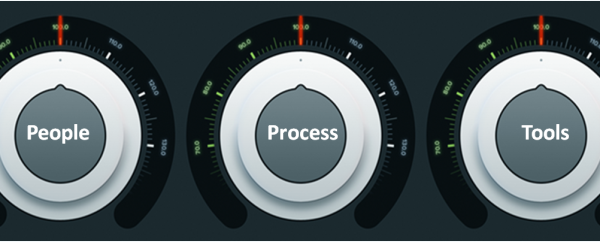Tuning in for QA Excellence
The future of QA, especially in higher salaried countries like Canada, is Excellence. Manually testing via repetitive basic unit tests, “blindly entering data”, has little future, or returns. I can’t get enough of articles like Computer World’s Tech hotshots: The rise of the QA expert. In a rapidly changing world of technology, sometimes QA departments can seem like they are locked in stasis, 30 years in the past. The greater challenge for any tool vendor is gaining these groups interest in evaluating change, not the tools features or functionality.
I usually divide Software QA into 3 buckets or aspects. The first and largest expense in most QA environments is People. The time costs for fingers and eyes to enter “data”. It’s not surprising then that much of QA cost cutting efforts are targeted at reducing People costs. Often People “tuning” amounts to cutting rather than development. When last did your QA department do any training or personal development? When last, as a QA professional did you do any training of your own initiative? Perhaps signing up for JSON introduction course or learn a new tool? “But as a Automation tool vendor, don’t you replace the need for People?”. The answer is no, we require higher skilled people to develop and use automation tools. Someone still needs to plan, develop and run the test cases, else who would we sell tools to. Less fingers and eyes maybe, but far more thought and Process.
That brings us to the second aspect of QA is Process. Business constantly needs to re-invent itself. Tuning business process is an import part of competing and achieving greater excellence. Yet how many software QA teams have you heard described as innovative? When last did you try an alternate, experimental process or embrace role changes, vs object to proposed role changes? Have you tried getting QA involved earlier in the development cycle, or change the requirements for hand-off from developers. Perhaps you brought some tests into the testing cycle earlier (like performance or identity) to provide more time for code fixes. Changing process requires the right people and the support infrastructure.
That brings us to the 3rd aspect of Software QA , support infrastructure or Tools. Just like People and Process, Tools by themselves will have little impact. They require the support of the people and the process. So often I hear of someone developing and in-house tool for testing, usually showing great skill, but taking significant time. This person then leaves the company, leaving no-one knowing how to use this expensive tool. I know 3 large enterprises, that used the same person to develop such a tool, that person no longer with any of the these companies. Tools cannot take more people to maintain than to manual testing would. So too must the tool support your business process, there is little point having a great tool in the lab, if the code drop is delayed and team sits idle waiting.
The 3 aspects are all not just linked but act as multipliers with a compounded effect. For example, if you process is streamlined to cut one development cycle out of being tested, it will impact both people and tools required. If a tool can cut 5 minutes off a test cycle, significant impact can be seen in people and process. If you do cut out a development cycle and save 5 minutes a test case, the effect is multiplied resulting in huge impact to the entire SDLC in either more testing or less expense. Only through “dialing in” and tuning all 3 aspects can Quality Assurance Excellence be achieved.
So please, take some time to consider how you can personally achieve greater excellence as a QA professional. I for one, personally and as a tool vendor, support any such activity.







